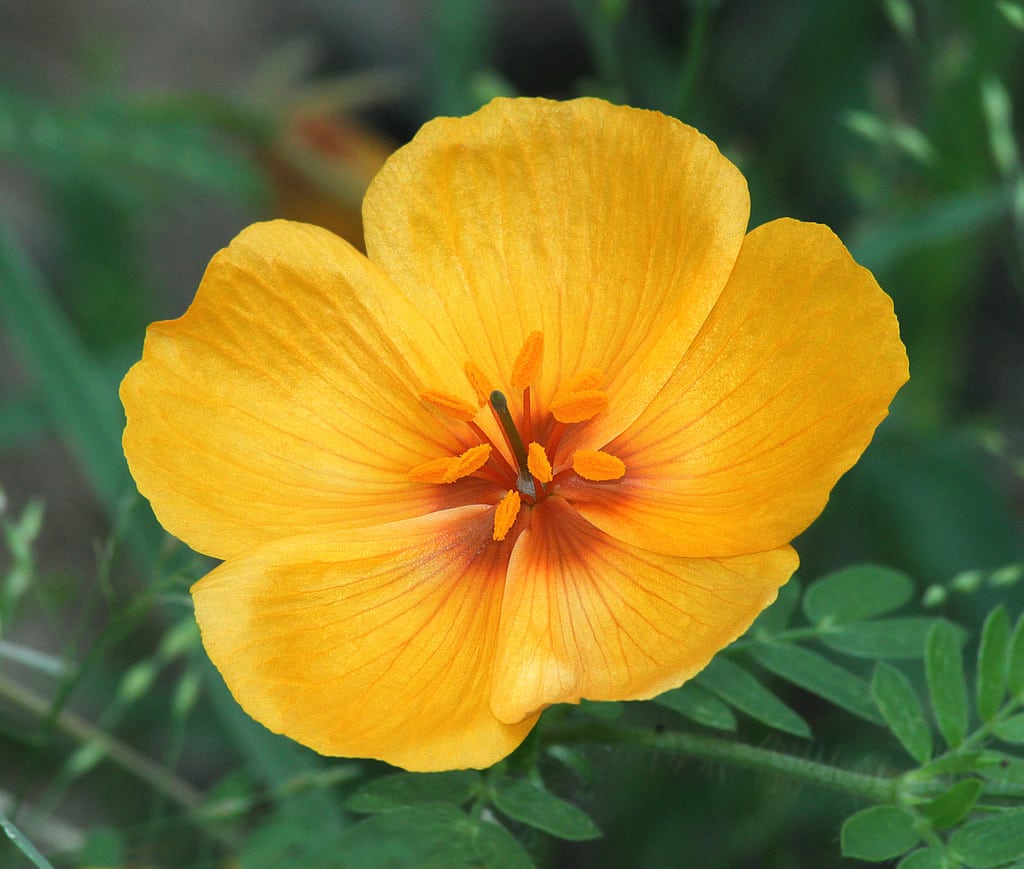Arizona Poppy Care: Tips On Growing Arizona Poppies In Gardens

Got a dry area in the landscape you’re looking to fill? Then the Arizona poppy may be just the plant. This annual has large, bright yellow flowers with an orange center. Numerous flowers grow on short stalks from a low spreading, green plant. Arizona poppy plants are ideal for large gardens in a very dry climate. In the right location, Arizona poppy care is easy.
What is an Arizona Poppy?
Arizona poppy plants (Kallstroemia grandiflora) aren’t true poppies because they belong to a different plant family. Also called summer poppy and orange caltrop, the bright yellow-orange flowers resemble those of California poppies. They are native to the U.S. southwest, from Arizona to New Mexico to Texas. They’ve also been introduced in southern California. Bloom time is generally August to September, which coincides with desert summer rainfall. Some people see blooms from February to September. Arizona poppy plants produce non-edible fruit that give way to seed pods. As these pods dry and split, seeds scatter and produce new plants the following year.
Growing Arizona Poppies
Hardy in zones 8b through 11, full sun is a must when growing Arizona poppies. These desert plants also grow best in sandy, well-drained soil and will tolerate dry weather. Give them plenty of space in the garden because a single plant gets to be 1 to 3 feet (31-91 cm.) tall and 3 feet (91 cm.) wide. Create a drift of Arizona poppy plants by giving them their own section of the garden. Plant seeds in late spring and cover lightly with soil. Water regularly. To reseed in the fall, shake the seeds from the dry seed pods onto the ground and cover with a thin layer of soil. They reseed on their own but may grow where not wanted. If saving seeds for the next spring, store them in a dark, dry place.
How to Care for Arizona Poppies
Maintenance for these beautiful and hardy plants is easy! Water Arizona poppy plants occasionally if summer rain has been light. Overwatering will harm the plants. There’s no need to deadhead the flowers or prune plants, and no feeding required either. They have no serious pests or diseases to worry about. Once they’ve established in the landscape, all you have left to do is sit back and enjoy the flower show!
Sign up for the Gardening Know How newsletter today and receive a free copy of our e-book "How to Grow Delicious Tomatoes".